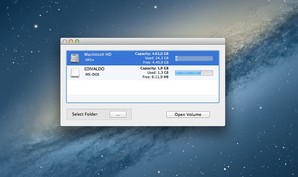

So maybe it would be better to only use the common volume to hold specific user-visible directories (e.g. The only problem I see with this is that the two platforms would end up sharing Library directories, which may have OS-specific content. Then configure each user to use that location for its home. I’m thinking that the best way to do this would be to create a new volume in the APFS container (or on separate storage, if you prefer) to hold home directories. But you may well want to share a common set of home directories between the installations, so you can access your documents from either OS. Which makes perfect sense, because lots of macOS’s bundled applications (e.g. When two copies of macOS share a single APFS container, they have separate Data volumes. Thus installing two copies of the same version of macOS in a single container is likely to be reliable versions which are far apart could give rise to problems, and might be better in different containers, where they have their own Preboot and Recovery volumes. The disadvantages arise from the fact that all systems within that container share Preboot and Recovery volumes when they’re derived from contrasting versions of macOS, that creates the potential for incompatibilities. This demonstrates the economy of disk usage achieved by installing multiple copies of macOS in a single container. In M1 Macs, the Recovery volume there contains the primary Recovery system for both of the Volume Groups, with the Apple_APFS_Recovery container on the internal SSD as its fallback. Within the APFS container are two complete Volume Groups, but Preboot, Recovery and VM volumes are common to both systems. My final example layout shows a disk with a single APFS container containing two bootable macOS systems, typically on an external disk or the internal disk of an Intel Mac. M1 Macs are distinct in having this fallback Recovery system which makes them more robust in the event of damage occurring to the boot container on their internal SSD. the Recovery volume is the primary Recovery system for that copy of macOS, and is supported by a catch-all or fallback Recovery system in the unmounted Apple_APFS_Recovery container, which is larger at 5.4 GB.the Data volume isn’t named Macintosh HD – Data, as on an Intel Mac, but plain Data.There are two significant differences, though: Only the Apple_APFS container is normally mounted, and that has a similar structure to the boot container of an Intel Mac, or that of an external bootable disk.
#Disk inventory x older version series
The internal SSD in an M1 series Mac consists of three APFS containers, and lacks the legacy EFI partition. Maybe it’s just a Signed and Sealed System Volume after all. In APFS reference documentation, it’s used to refer to the Sealed System Volume, whereas in its Platform Security Guide it means the Signed System Volume, although the top-level hash is known as the Seal rather than the Signature. Note that the Seal on the unmounted read-only System volume is normally broken, but it’s the snapshot which is the important one: that should be sealed, unless you have broken its seal intentionally.Īpple’s terminology for the SSV isn’t entirely consistent. VM, containing virtual memory caches, which is upwards of 20 KB depending on use.Recovery, the Recovery Volume, of around 1.1 GB.Preboot, a small volume of around 714 MB.
#Disk inventory x older version full
On Intel Macs, this is given its full name



 0 kommentar(er)
0 kommentar(er)
